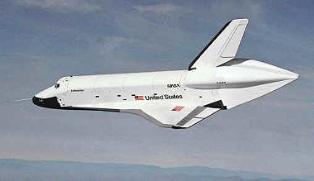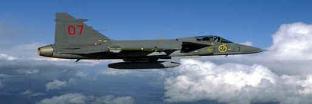Aircraft Pilot Couplings (APCs)
Objectives: To avoid APC by design
The designer shall exploer and predict potential APC problems on the basis of a number of differing mathematical aircraft and flight control system models, thus developing theoretical and analytical conslusion towards the analysis of PIOs and methods of possible prevention.
The closed loop phenomenon of aircraft-pilot coupling (APC), with particular reference to pilot-induced oscillations (PIOs), has been ever-present in aviation from PIO susceptibility in the Wright brother’s 1903 flyer extending to present-day incidences in civil transport aircraft such as the Airbus A320, through to combat aircraft such as the YF-22A and the Swedish SAAB JAS 39 Gripen.
 |
PIOs are an interaction between a pilot and aircraft that cause inadvertently sustained aircraft oscillations to occur and result from the pilot efforts to simply maintain control of the aircraft in varying flight conditions. In calling them pilot-induced, engineers are referring to the fact that the oscillations disappear as the pilot relinquishes control of the vehicle. Aircraft-pilot couplings, at their extreme, can render cliff-like drops in the aircraft handling qualities. This results in the aircraft becoming uncontrollable and may eventually lead to a fatal accident. It is here where this study forms its basis, to investigate causes of such incidents, understand and be able to predict their occurrence and identify ways to inhibit their onset. |
 |
|
 |
Design Consideratations for PIO Prevention
Two basic PIO problems:
|
Classical |
High Order |
|
Typified by oscillations caused by over-sensitivity, these have an excessively low natural frequency and low damping. |
Oscillations at a frequency where the attitude response lags the stick inputs by ~180°. |
|
Resulting from the dynamics possible with ‘natural’ aerodynamics. |
Mostly associated with control system effects. e.g. additional phase lags due to inappropriate filters, digital effect time delays, excessive command path gains and actuation system saturation. |
|
The pilot can usually stop the PIO by a reduction in gain or backing out of the closed loop altogether. |
The angular acceleration responses are lagged or delayed and the pilot, typically, feels unable to stop the PIO. |
|
Classical PIO is associated with PIO ratings 1 to 4. |
High order PIO is associated with PIO ratings 5 or 6. |
Test and Evaluation
Experience reveals that the adverse effects of APCs are often first experienced in flight test with new configurations and can have dramatic consequences on the aircraft’s development.
Therefore, piloted simulation can be used to demonstrate these adverse APC/PIO characteristics and also to explore airframe and control system design features, in addition to pilot control strategy, that mitigate against the effects of adverse APCs.
Piloted tests have been conducted on the Liverpool University Flight Simulator and associated FLIGHTLAB software.
Numerous aircraft can then be modelled and augmented in FLIGHTLAB, for APC test and evaluation on the flight simulator, including the Grumman X-29 forward swept wing aircraft, a generic transport aircraft, and helicopter.